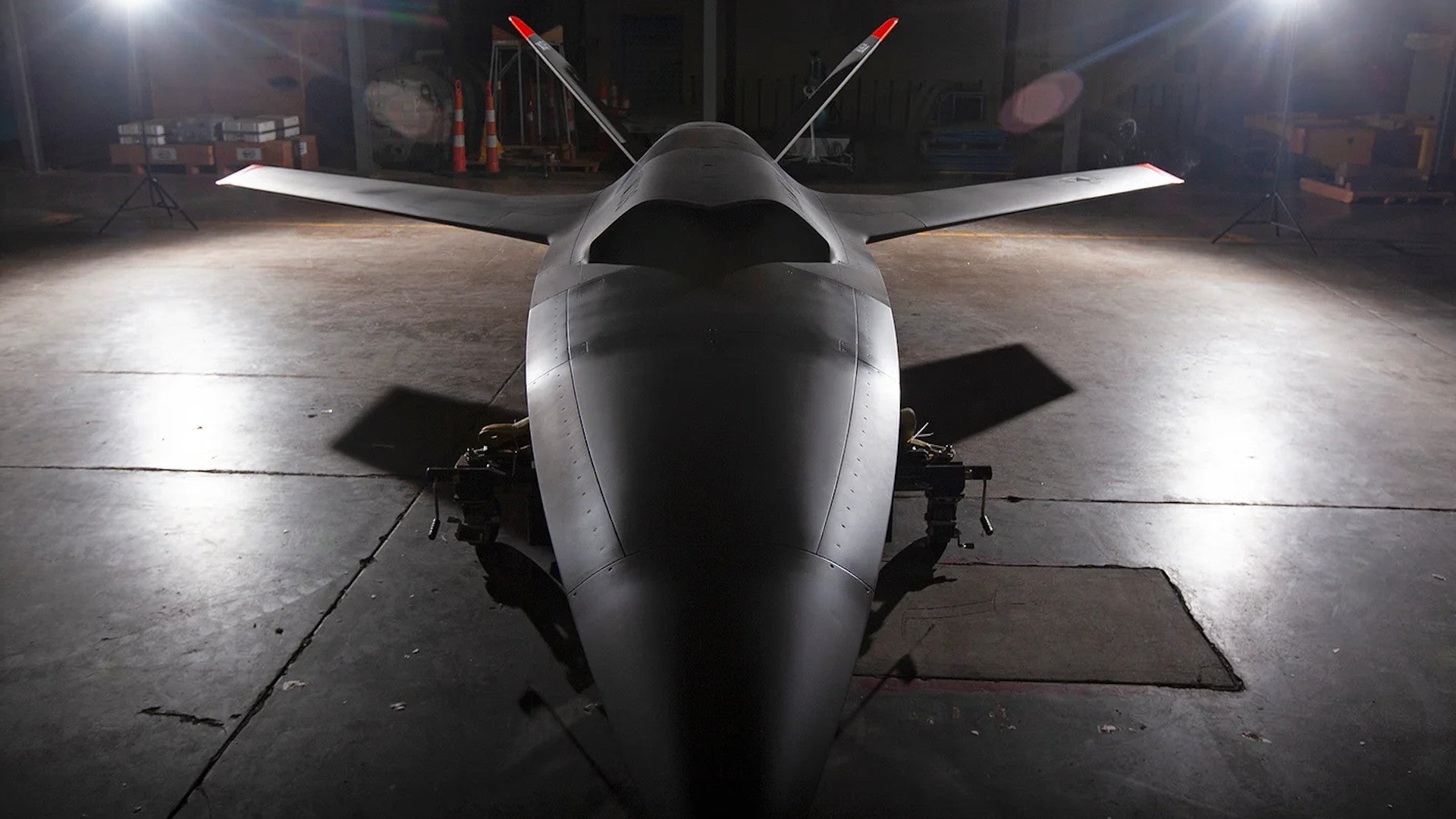The U.S. Air Force has awarded drone maker Kratos a contract to develop and flight test an unmanned aircraft as part of the secretive Off-Board Sensing Station program, or OBSS. Details about the OBSS project remain limited, but the effort has a clear, overarching focus on affordability. There are indications that this reflects a broader shift in how the Air Force views so-called “attritable” platforms, something Kratos has previously told The War Zone that it is already well prepared for on the design and manufacturing fronts.
The Pentagon first announced that the Air Force Research Laboratory (AFRL) had awarded Kratos the OBSS contract late yesterday in a daily contracting notice. The deal has a base value of just under $17.7 million, with an additional option that, if exercised, would add another $31.4 million. That option would also extend the contract’s period of performance from 12 months to 27 months. The existence of the OBSS project — and that Kratos was among the contenders — first emerged in August, and you can read more about what could be gleaned about this project at that time in the War Zone‘s initial reporting. It’s not clear how many other companies submitted proposals or if any of them will also receive contracts.
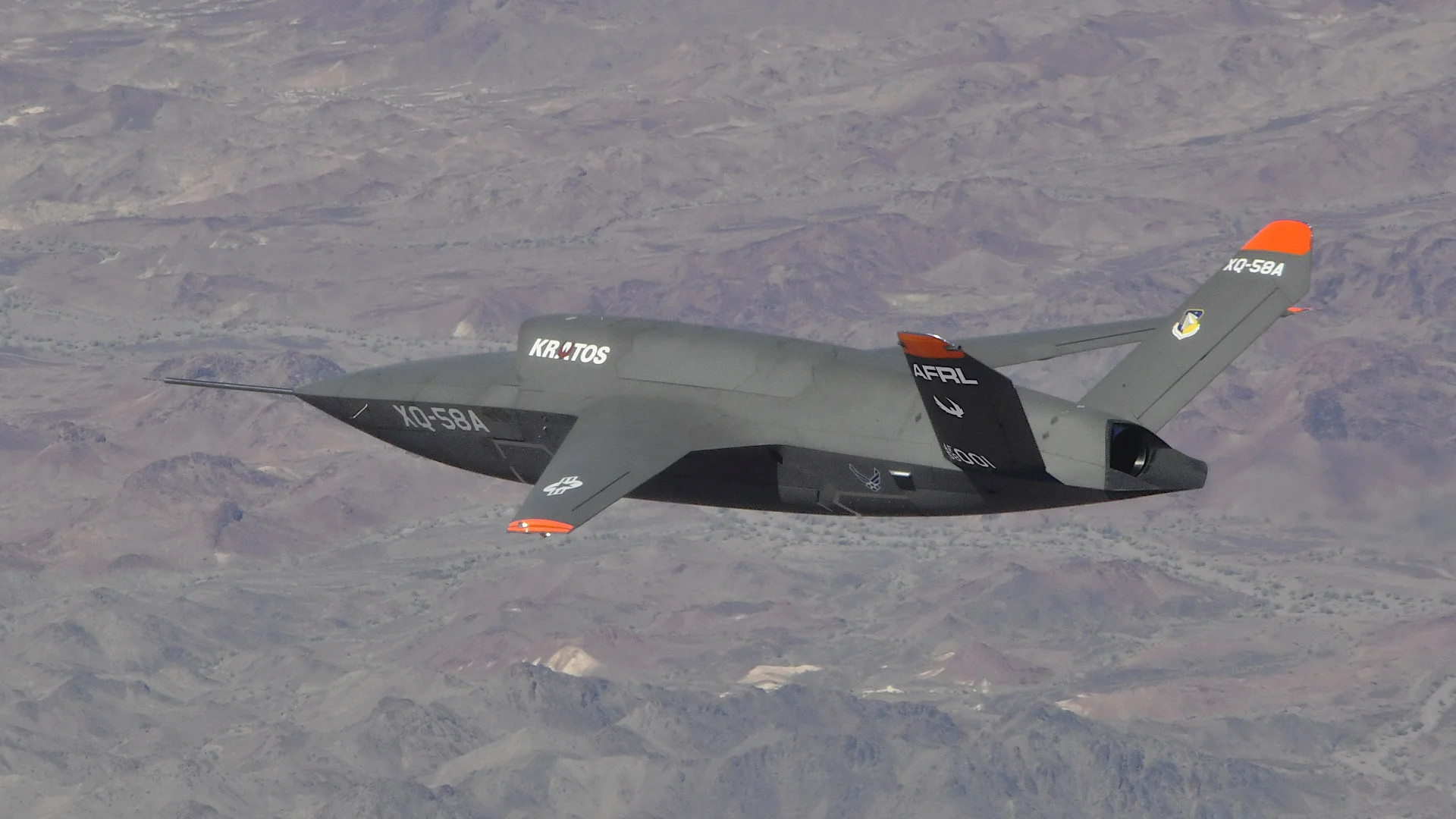
“This contract provides for a design, development, and flight demonstration in an open architecture aircraft concept to achieve the goals of rapid time-to-market and low acquisition cost,” according to the Pentagon’s contracting announcement.
A press release from Kratos, which says that OBSS has a focus on manned-unmanned teaming and that AFRL is conducting the project as part of its “Autonomous Collaborative Platforms (ACP) technology maturation portfolio,” describes its design as follows:
The OBSS vehicle is intended to be an affordable, highly modular conventional takeoff and landing jet-powered UAS [unmanned aircraft system]. The Kratos OBSS solution incorporates innovative manufacturing techniques that enhance its ability not only to provide significant performance for sensor extension missions for manned jet aircraft, but also will accommodate significant offensive weapons volume to also act as a weapons bay extension for manned aircraft. OBSS is a new addition to the Kratos family of low-cost Autonomous Collaborative Platforms (ACP) designed to employ weapons, sensors, and other effects that generate affordable, force multiplier combat power with a forward force posture.
This description is well in line with various publicly known projects the Air Force is working on with regard to advanced manned-unmanned teaming capabilities. The best known of those efforts is AFRL’s Skyborg program. The central goal of that effort is to develop an artificial intelligence (AI) driven “computer brain,” along with a suite of associated systems, which will be able to fly semi-autonomous “loyal wingman” type drones networked with manned aircraft, and potentially fully autonomous unmanned combat air vehicles (UCAV).

In December 2020, the Air Force announced that it had hired Kratos, along with Boeing and General Atomics, to build unmanned aircraft to carry the Skyborg suite of systems. At least one modified Kratos UTAP-22 Mako unmanned aircraft, a loyal wingman-type design, has already been employed in Skyborg-related testing. The service has been experimenting with Kratos’ stealthy XQ-58A drones in other capacities, including as aerial communications gateways, as well. The War Zone has reached out to Kratos to see what, if any, relationship OBSS may have to its work under Skyborg.
Separately, earlier this month, the Air Force announced a test of “a low-cost attritable aircraft fuselage and wings design” that “aimed to compare the structural strength and stiffness … using novel manufacturing processes versus a traditional aerospace M&P [Materials and Manufacturing Processes] approach.” Kratos is involved in that program, which is called the Design for Manufacture of Attritable Aircraft Primary Structure (DMAAPS), together with A&P Technology, Hawthorn Composites, and the University of Dayton Research Institute (UDRI). The Air Force Research Laboratory is in charge of DMAAPS and has said it is related to the ACP effort.
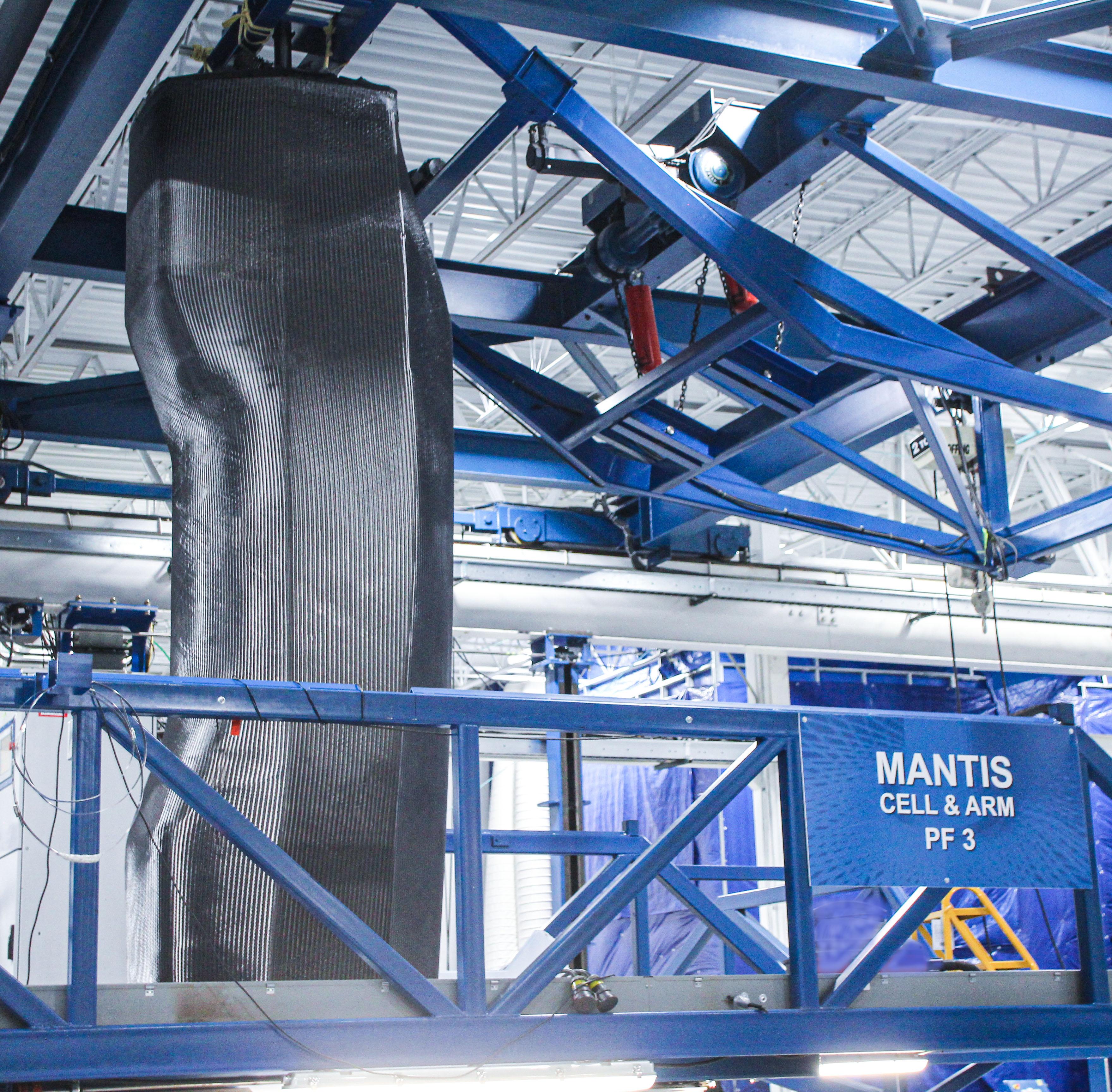
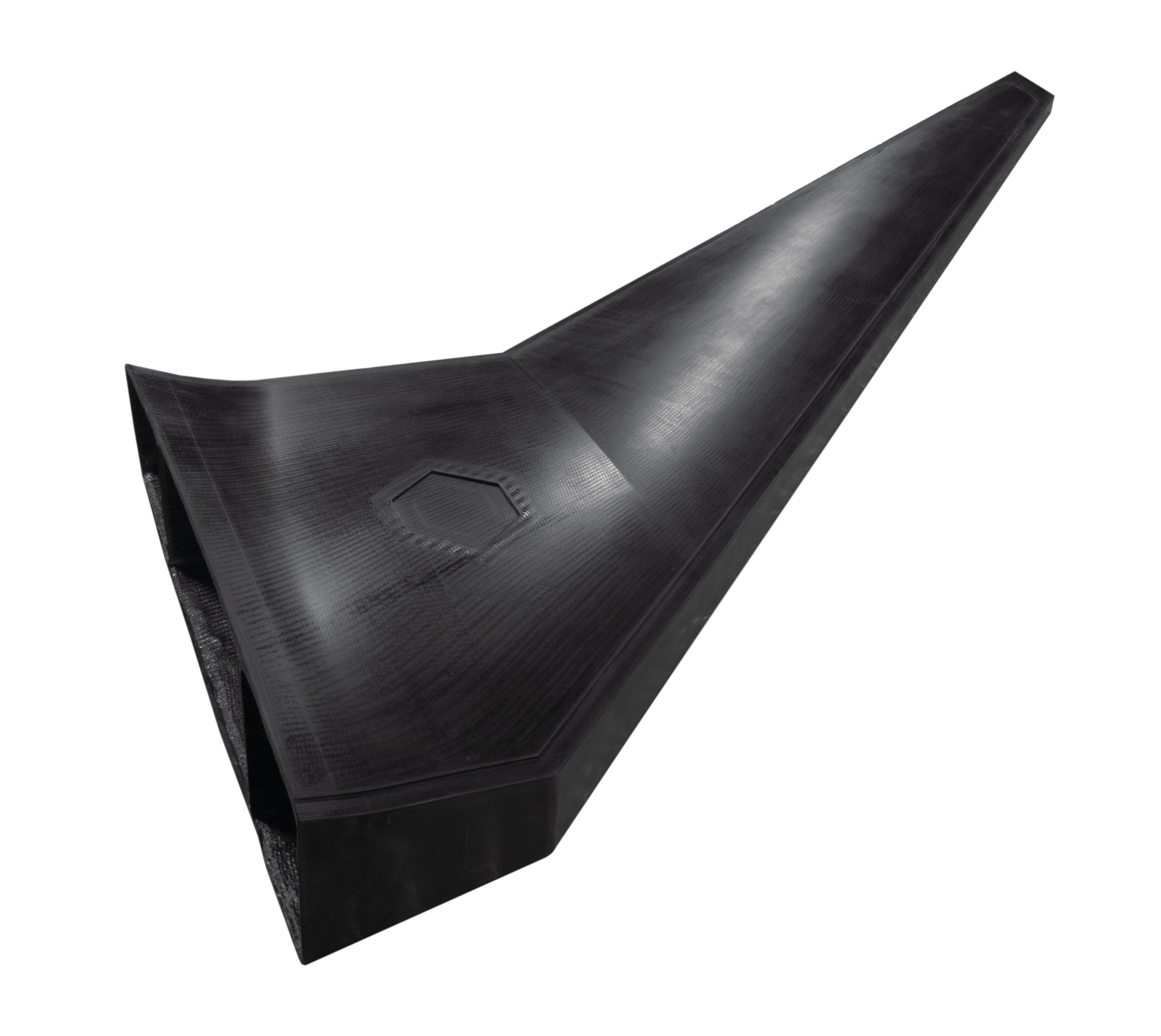
“Autonomous Collaborative Platforms (ACPs) will play an increasingly important role in various air force missions,” Doug Meador, the ACP Air Vehicles Portfolio manager within AFRL’s Aerospace Systems Directorate, said in a statement. “The main tenets of ACPs are autonomy, affordability, speed of design and build, and mission effectiveness. DMAAPS directly addresses affordability and speed of design and build, which are critical to our ability to develop these systems in large numbers and present a military challenge to peer adversaries.”
No pictures or artwork related to the OBSS program has publicly emerged so far. At the Air Force Association’s annual Air, Space, and Cyber Conference in September, Steve Fendley, President of Kratos’ Unmanned Systems Division, confirmed to The War Zone that it is not related to any of its existing designs, but could not provide any additional details. This would make sense given that we now know that this new unmanned aircraft can take off and land conventionally, unlike Kratos public offerings, all of which are launched via catapults and have parachute recovery systems.

“We’re on pins and needles, obviously hoping that we’re selected,” Fendley added at that time. “It’s a game-changer.”
Though we still have much to learn about OBSS and its goals, as well as Kratos’ submitted design, it is obvious that affordability is a key consideration for the program. Beyond that, interestingly, both the Pentagon’s contracting announcement and Kratos’ press release do not use the word “attritable,” despite the Air Force and this company using that term to describe OBSS in the past.
The War Zone
has typically defined attritable as a platform — whether a drone or something else — designed to balance capabilities and low cost in such a way that commanders would be comfortable employing it in higher-risk scenarios that might otherwise preclude the use of something more costly and technologically advanced.
As AFRL’s Doug Meador noted earlier this month with regards to the DMAAPS program, the Air Force has, at least in the past, viewed attritable designs as critical to allow for the acquisition of advanced aircraft and munitions in the kinds of volumes that would be necessary to sustain future conflicts, especially high-end fights against near-peer competitors, such as Russia or China. Otherwise, attempting to do so, especially during a crisis, could be cost-prohibitive and overly time-consuming. OBSS, like DMAAPS, appears to be, at least in part, about crafting new and improved design and manufacturing processes with an eye toward high-volume production, as well as developing the unmanned aircraft itself.

“Expendable means, and I think this is consistent between the Air Force and industry, expendable means I’m going to fire it one time or launch it one time and it’s going to do one mission, its finished,” Kratos’ Fendley told The War Zone in September. “Attritable means it’s going to have some limited life or limited number of missions, whether that’s one or 10 or a hundred, I don’t know. Exquisite means I really want it to be around forever.”
“I would say that the programs we’ve been on and the requirements we’ve seen, there typically is a desire, at least, that says we would like this to be good for x number of hours or x number of missions,” he continued. “So, kind of a threshold, it’s that it needs to be able to support this many missions or this many hours.”
This understanding would fit well with the Air Force’s unexpected decision to send its first XQ-58A Valkryie to the National Museum of the U.S. Air Force at Wright-Patterson Air Force Base earlier this year after just a handful of flights. Kratos had originally developed the Valkryie for the Air Force under the Low Cost Attritable Aircraft Technology (LCAAT) program. Novel design and manufacturing concepts were important components of the LCAAT effort, in addition to flight testing an attritable design.

At the same time, at the Air Force Association conference, representatives from another aviation company had told The War Zone that they were seeing a shift in the Air Force’s language away from attritable and toward affordable. When asked about this, Fendley said he had not observed this trend himself, but that it was his opinion that it made good sense to focus on providing certain capabilities affordably, rather than putting the primary emphasis on the total service life of a low-cost platform.
“If we develop, and let’s just pick Valkyrie, we develop an attritable aircraft, that means that after some number of missions or flights they would accept if the airplane didn’t come back,” he explained. “I can’t design an airplane to be good for five flights, right?”
Fendley also called into question whether you’d ever want to design aircraft with these kinds of parameters in mind. “So, over time, this, let’s just use attritable, let’s say bring an attritable system that’s good for 50 missions. Guess what happens over time? Boy, budgets are getting tighter and tighter, we want it to last for 75 missions now. Darnit, we didn’t design it for that,” he said.
The War Zone has previously raised many similar questions with regard to the Air Force’s proposed Digital Century Series concept, which had envisioned the rapid development and acquisition of small batches of combat aircraft with relatively short expected service lives. Public discussion of this idea, including by the Air Force itself, has dropped off significantly since the departure of its chief advocate, former Assistant Secretary of the Air Force for Acquisition, Technology, and Logistics Will Roper, in January.

“Affordable is dependent on the application, but that kind of makes more sense,” Fendley said on the sidelines of the Air Force Association conference. “If the requirement is affordable, I would say it’s very clearly then the government is stating there must be a design that costs” a certain amount and that “they would have to define what that number is.”
“So you have to design to cost, which is one piece, then you look at it and say, okay, we’re designing to cost here, but we just figured out that for one more dollar we can add 20 percent to this part of [the] performance, we should do that,” he added. “And, oh, by the way, we can subtract two percent on this performance parameter and save 20 percent of the cost of this production item, so we should do that.”
Fendley made clear that the performance per cost metric is something Kratos’ design and manufacturing teams are “laser-focused on.” Though the company has described many of its products, such as the Valkyrie, as attritable, its statements have often focused on how it is keeping actual unit costs low. For instance, it has said in the past that one of its goals has been to drive the price of a single XQ-58A down to around $2 million as production of those drones ramps up. Low-cost, but still very capable jet engines produced by Technical Directions Inc. (TDI), a division of Kratos, a been a major part of the company’s efforts to reduce the price points of its products.
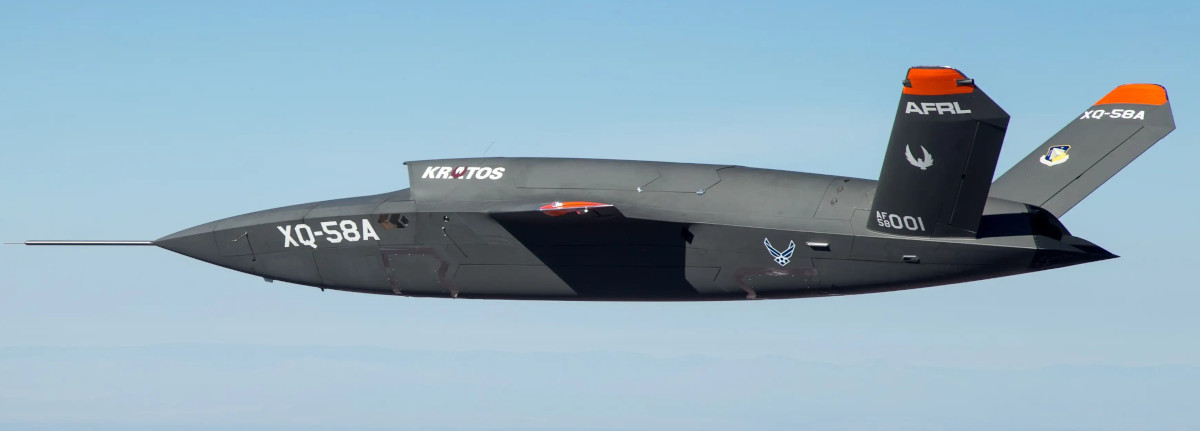
Leveraging new digital engineering capabilities, a growing general trend in the military aerospace industry, to help accelerate design and production processes, while also keeping costs low, is another part of this puzzle. “Kratos’ industry-leading digital engineering (DE) framework for high-performance jet UAS will be used to develop, mature, leverage, and integrate system-ready technologies and supplement its DE framework with prudent early ground and flight demonstrations and experiments,” the company’s OBSS press release said. Fendley had previously told The War Zone that there was still a critical need to balance work in the virtual space with real-world prototyping, something that other companies have espoused, as well.
Overall, Fendley said at the Air, Space, Cyber conference that he believes Kratos’ core business philosophies will provide advantages and different opportunities over its competitors in the future. This would be especially true if U.S. defense spending flatlines or even contracts in the coming years, as there have been many indications that it will. He added that much of how Kratos, a relatively small company, operates has been driven over the years by the need to maximize what it can do with its own internal funding, rather than relying on U.S. government contracts.
“Keep an eye on affordability and how affordability plays into the whole unmanned aircraft arena,” he said. “I think that’s such a key element, and we’re so focused on that, I think it’s very important.”
All told, we will hopefully continue to learn more about OBSS and Kratos’ new drone design as time goes on now that this contract has been awarded. In the meantime, it is increasingly apparent that this program is indicative of emerging discussion within the Air Force about affordability and what that means, especially for advanced unmanned aircraft.
Updated 8:35 PM EST:
Today’s daily contracting announcement from the Pentagon includes an entry showing that General Atomics Aeronautical Systems, Inc. (GA-ASI) has now also received a contract as part of the OBSS program. Its initial award for the first 12 months of work is valued at nearly $17.8 million, with its potential 15-month-long option period being worth almost $32 million.
As with Kratos’ deal, GA-ASI’s contract is “for the design, development, and flight demonstration in an open architecture aircraft concept to achieve the goals of rapid time-to-market and low acquisition cost.” Steve Trimble, Aviation Week‘s Defense Editor, has also reported that the Air Force plans to pick one company to advance to a follow-on flight demonstration phase after the initial contract period.
Contact the author: joe@thedrive.com
